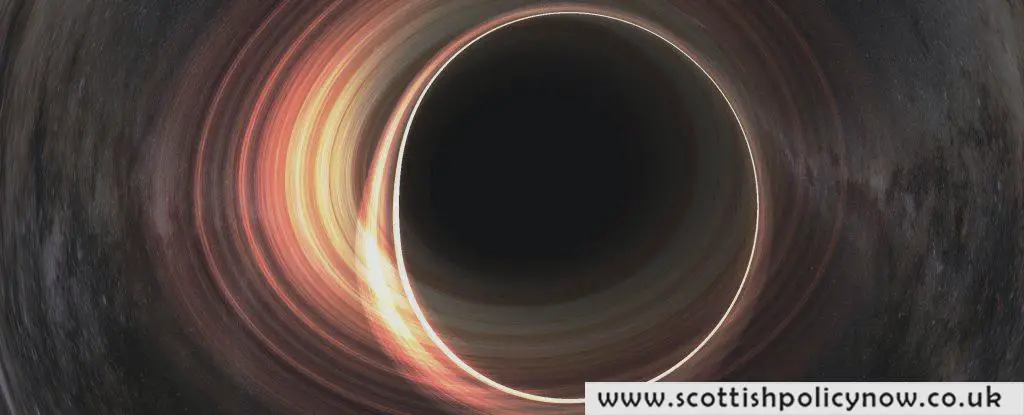A mimic of a black hole could give us insight into a mysterious radiation theoretically emitted by the genuine article.
In 2022, a group of physicists utilized a string of atoms arranged in a single file to replicate the event horizon of a black hole. They observed what can be likened to Hawking radiation – particles generated from disruptions in the quantum fluctuations induced by the black hole’s distortion of spacetime.
According to them, this could aid in reconciling the conflict between two presently incompatible frameworks for describing the Universe: the general theory of relativity, which elucidates gravity’s behavior as a continuous field called spacetime, and quantum mechanics, which delineates the behavior of discrete particles through probability mathematics.

For a comprehensive theory of quantum gravity that can be universally applied, these two incongruous theories must somehow find common ground.
This is where black holes enter the picture – conceivably the most bizarre, extreme entities in the Universe. These colossal entities are so unimaginably dense that within a certain proximity to the black hole’s center of mass, no velocity in the Universe is adequate for escape. Not even the speed of light.
That distance, which varies depending on the black hole’s mass, is termed the event horizon. Once an object crosses its threshold, we can only speculate about its fate, as nothing returns bearing crucial information. However, in 1974, Stephen Hawking postulated that disruptions to quantum fluctuations caused by the event horizon give rise to a type of radiation akin to thermal radiation.
If this Hawking radiation indeed exists, it is currently too feeble for detection. It is conceivable that we may never discern it amidst the noise of the Universe. Nevertheless, we can investigate its characteristics by fabricating black hole analogs in laboratory environments.
This had been attempted previously, but in November 2022, a team led by Lotte Mertens of the University of Amsterdam in the Netherlands embarked on a novel approach.
A one-dimensional array of atoms served as a conduit for electrons to ‘hop’ from one position to another. By adjusting the ease of this hopping process, the physicists could induce the disappearance of certain properties, effectively creating a semblance of an event horizon that interfered with the wave-like behavior of the electrons.
The consequence of this simulated event horizon was a temperature increase that aligned with theoretical predictions of an analogous black hole system, the team asserted, but only when a segment of the array extended beyond the event horizon.
This suggests that the entanglement of particles spanning the event horizon may play a crucial role in generating Hawking radiation.
The simulated Hawking radiation exhibited thermal characteristics only within a specific range of hopping amplitudes and under simulations that commenced by emulating a form of spacetime considered ‘flat’. This implies that Hawking radiation may exhibit thermal properties only within certain circumstances and when there is a alteration in the curvature of spacetime due to gravity.
The implications for quantum gravity are unclear, but the model offers a means to explore the emergence of Hawking radiation in an environment unaffected by the tumultuous dynamics of black hole formation. Furthermore, due to its simplicity, it can be employed in a wide array of experimental configurations, the researchers noted.
“This, can open a venue for exploring fundamental quantum-mechanical aspects alongside gravity and curved spacetimes in various condensed matter settings,” the researchers concluded.
The study has been published in Physical Review Research.
A version of this article was initially published in November 2022.








